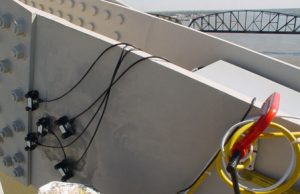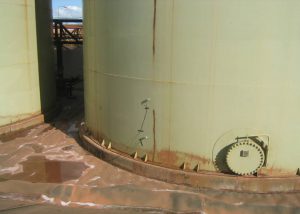Acoustic Emission (AE) testing stands as a transformative method for scrutinizing material behavior under stress, a cornerstone in non-destructive testing (NDT) applications. Utilizing AE equipment, TechCorr harnesses the power of sound to discern the intricate sounds of cracks propagating, fibers fracturing, and other active modes of damage within stressed materials. The profound advantage of AE lies in its ability to detect minuscule-scale damage well in advance of catastrophic failure, making it an invaluable tool for quality control (QC) testing, structural proof tests, and ongoing plant operations. AE extends its utility beyond traditional NDT applications, offering unparalleled insights into materials research and development in laboratory settings. Moreover, AE equipment's adaptability to various forms of production QC testing, such as weld monitoring and leak detection, underscores its versatility in industrial applications.
Specifically tailored for Above Ground Storage Tank (AST) applications, TechCorr's AET methodology provides real-time, 100% volumetric monitoring, enabling swift detection of structural defects. Under ISO-9001 Certification, our state-of-the-art AE systems and sensors undergo meticulous calibration and maintenance by TechCorr's highly trained staff, ensuring precision and accuracy in every inspection. Employing advanced low and high-frequency receivers, our AET system captures and models acoustic signals, facilitating in-depth analysis through proprietary auto-analysis and artificial intelligence software. This analysis reveals the type, location, and severity of damage mechanisms such as bottom side and top side corrosion, weld cracking, and embrittlement. While AET may not fulfill API 653 requirements, its role as a powerful screening tool aids in maintenance prioritization. Furthermore, when integrated with our In-Service Robotic Tank floor inspection service, AET facilitates deferral of out-of-service tank inspections, optimizing asset management strategies while minimizing operational disruptions.


